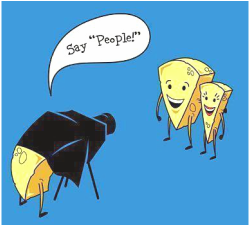STORY TELLING GUIDELINES:
- Title. Our experiences are complex, stories tend to be simple. What is the title of the story you want to tell? Giving it a title will help you get to the heart of your story. Or, if you were to pitch this story to a movie producer, what’s the one sentence pitch? For example: “How I learned to forgive my mother.” Or “Adventures in the Sewer System.”
- Setting. Give a few introductory details, only what is necessary: place, time, age, others involved and your relationship to them. This gives your story a context, a setting and characters. This can happen in a sentence: “I grew up angry in the vacant plains of Eastern Kansas, the eldest son of Mennonite farmers.”
- Character. We need to have a feeling for the “who” of the story. A few descriptive words (short, rough hands, a chipped front tooth). Personality (quiet, never made eye contact, loved dogs). Avoid superlatives (“the most amazing!”). What was the longing or deep fear that you carried (helps us get to the heart of the person)–“I longed to move away from home.” “I was terrified of becoming my father.” In an honest way (without emotional pandering), give us something vulnerable about the main character….vulnerability is the door that allows the audience to connect—“I lost my mother when I was 5, and I think I wanted every female teacher I had to be my mother.”
- Action. In a story something happens. Stories have a beginning, middle and an end. There’s a conflict, a climax, and a resolution. No lectures, no explaining, no group therapy. Try to focus on one interaction, one moment that changed you. Get into the action as soon as possible.
- See it. Like good writing “show, don’t tell.” In other words, visualize the scenes of your story and then describe these scenes without lots of background and explanations: “She was short, stout, with a face like a withered apple. She was also the best lover I ever had.” Don’t give us your thoughts on the justice system, give us the smell, the colors, the sounds of the jail you sat in. Like a movie director, create an internal storyboard: Scene 1. My grandfather gives me a BB gun. Scene 2. Sitting in the Medford police station. Scene 3. My mother enrolling me in Catholic school. Turn on your mental movie projector, conjure up the detailed images, then tell us what you saw, heard, and felt.
- Start and Finish. Know your opening line, otherwise you’ll wander: “When I was a girl my only friends were hamsters.” You also need to know your last line to keep your story from trailing off…: “Twenty years later I’m still waiting for that apology.” Make sure the last line helps us know what the story means to you: “I still don’t know what happens after we die, but every time I hear that song I see her face, and I hear her singing, and it makes me smile.”
- Summary: Remember there is no right way to tell your story. Everyone has a different style. Talk in a way that’s natural to who you are. Begin it, follow it through the action, end it and tell what it all means. Remember color, beauty, feelings, and touch. Turn on the lights, camera, action. Place the characters and action in mid-air between yourself and your listeners. Don’t talk about it, tell it. Live through it again.
Helpful Hearth Hints for Story Tellers
The Hearth is a non-profit community building model with first person story telling, reflective listening and community service. Each Hearth event raises money for a non-profit in the community. And, each Hearth’s story telling reflects a theme for that event.
Bethany Presbyterian Church graciously donates their space for this event. However, The Hearth is not a religious ceremony. People of many faiths, or no organized faith, are in attendance. Care must be given to not promote religion, and instead promote understanding of our community members.
Looking for a good story involves being able to connect with the audience. Find a story the audience can relate to. Then work on making it a good story. Be descriptive. What did the scene look like? How did you feel? These details of character descriptions, accents, sounds and smells allow the audience to really be a part of your story. The audience can imagine your story rather than just hear it.
Don’t tell your life story. Rather, find an event in your life to share with the audience. Perhaps this list will stir up some of your memories:
Practice your story. Keep your story 7 to 10 minutes long. The audience will become fidgety if your story exceeds the time limit. Memorize your opening line and your final line. It helps to keep the story teller from babbling before the story starts or after the story ends. Tell your story as if you were sitting around a fireplace hearth with your friends. Be expressive with your face and gestures. We look forward to your story!
We have story telling rehearsals a week or two before the event. You may come to either date that suits your schedule. If you need a special time, please call or email your Hearth contact to arrange a time. We will time your story and make suggestions to keep the story engaging for the audience and no longer than 10 minutes. During the Hearth event, if it looks like your story is running over, we will hold up a “2 Minute Warning” or a “Time is Up” sign from the front row. We hope that your practice of the story before and perhaps after the rehearsal will keep your story on time, as holding up signs can be disruptive to some story tellers. Please bring a title for your story to the rehearsal or we can help you with a title after we hear your story. Also, please bring about a three line biography to the rehearsal so that we may introduce you at The Hearth. Please let your Hearth contact know which rehearsal you will be attending.
You will be provided fliers for your Hearth story telling event. Please hand them out to your friends and work associates to come to The Hearth and hear your story.
Please arrange to arrive at The Hearth event at 6:30. You can familiarize yourself with the stage and microphone set-up. You can also decide if you want to sit on the stool or stand and if you want to hold the microphone or keep it on a stand while telling your story. When you take the stage, it is important to arrange the microphone to the height of your mouth so the audience can easily hear you. If you need assistance, please ask emcee Steve Roe to help adjust the microphone. Stand or sit very close to the microphone. The Hearth begins at 7pm and ends at 9pm.
The Hearth is a non-profit community building model with first person story telling, reflective listening and community service. Each Hearth event raises money for a non-profit in the community. And, each Hearth’s story telling reflects a theme for that event.
Bethany Presbyterian Church graciously donates their space for this event. However, The Hearth is not a religious ceremony. People of many faiths, or no organized faith, are in attendance. Care must be given to not promote religion, and instead promote understanding of our community members.
Looking for a good story involves being able to connect with the audience. Find a story the audience can relate to. Then work on making it a good story. Be descriptive. What did the scene look like? How did you feel? These details of character descriptions, accents, sounds and smells allow the audience to really be a part of your story. The audience can imagine your story rather than just hear it.
Don’t tell your life story. Rather, find an event in your life to share with the audience. Perhaps this list will stir up some of your memories:
- Narrowly escaping disaster
- A quest to discover fame, fortune or love
- Someone I wanted to be like
- Someone I envied or was jealous of
- A former pet
- A special hideout or getaway of the past
- A favorite home of a friend
- The first place I lived on my own
- A place where I learned a lot
- A place I once considered magnificent
- A reunion
- A teacher to whom I owe a lot
- First time feeling like an adult
- A relative who fascinates me
- Restitution
- Waiting to be rescued
- A memorable birthday
- A strange party
- Seeking to solve a mystery
- Learning to work hard
- A deathbed promise
- An event causing a personality change
- A child searching for a lost parent or vice versa
- The redemption of an unpleasant character
- A surprising invention
- The reconciliation of enemies
- The loss and/or recovery of a valuable object
- A piece of clothing I though would change my image
- Something I associate with my mother or father
- An unusual warning or a warning from an unusual source
Practice your story. Keep your story 7 to 10 minutes long. The audience will become fidgety if your story exceeds the time limit. Memorize your opening line and your final line. It helps to keep the story teller from babbling before the story starts or after the story ends. Tell your story as if you were sitting around a fireplace hearth with your friends. Be expressive with your face and gestures. We look forward to your story!
We have story telling rehearsals a week or two before the event. You may come to either date that suits your schedule. If you need a special time, please call or email your Hearth contact to arrange a time. We will time your story and make suggestions to keep the story engaging for the audience and no longer than 10 minutes. During the Hearth event, if it looks like your story is running over, we will hold up a “2 Minute Warning” or a “Time is Up” sign from the front row. We hope that your practice of the story before and perhaps after the rehearsal will keep your story on time, as holding up signs can be disruptive to some story tellers. Please bring a title for your story to the rehearsal or we can help you with a title after we hear your story. Also, please bring about a three line biography to the rehearsal so that we may introduce you at The Hearth. Please let your Hearth contact know which rehearsal you will be attending.
You will be provided fliers for your Hearth story telling event. Please hand them out to your friends and work associates to come to The Hearth and hear your story.
Please arrange to arrive at The Hearth event at 6:30. You can familiarize yourself with the stage and microphone set-up. You can also decide if you want to sit on the stool or stand and if you want to hold the microphone or keep it on a stand while telling your story. When you take the stage, it is important to arrange the microphone to the height of your mouth so the audience can easily hear you. If you need assistance, please ask emcee Steve Roe to help adjust the microphone. Stand or sit very close to the microphone. The Hearth begins at 7pm and ends at 9pm.



